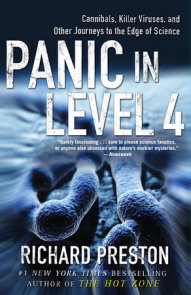
The book was a massive bestseller that completely changed how the world looked at pandemics, spurring action and discussion around bioterrorism and public health as never before in modern times in 1999, American Scientist named it one of the 100 or so books that shaped a century of science, alongside classics like Silent Spring and The Autobiography of Charles Darwin.

The film was based on The Hot Zone, a 1994 nonfiction book by journalist Richard Preston about the very real Ebola virus, which he’d been reporting on in West Africa for several years. These can largely be traced back to the original virus-leaps-from-a-monkey-to-almost-destroy-humanity story: 1995’s Outbreak, in which Dustin Hoffman and Renee Russo play stoic government scientists racing against time to save humanity from a faceless, relentless enemy every bit as scary as Michael Meyers: the fictional Motaba virus. Not just in the real-life cases of other diseases including SARS and bird flu, but in movies like Contagion and 28 Days Later. (Sept.If the story of the COVID-19 outbreak seems familiar - a rare disease strikes a small area, only to become a deadly global pandemic - it’s because we have indeed seen it all before. A movie based on this book, directed by Ridley Scott ( Alien ), will star Robert Redford. Preston plausibly argues that the emergence of AIDS, Ebola and other highly adaptable rain-forest viruses is a consequence of ecological ruin of the tropics. In a horrifying and riveting report, portions of which appeared in the New Yorker, Preston ( American Steel ) exposes a real-life nightmare potentially as lethal as the fictive runaway germs in Michael Crichton's The Andromeda Strain. Army-led biohazard task force that decontaminated the lab, exterminating hundreds of monkeys to prevent the possible airborne spread of the disease to humans. And in 1989 Philippine monkeys in a Reston, Va., research lab, found to be infected with Ebola, were the target of a U.S.

Outbreaks of the Ebola filovirus devasted Sudan and Zaire in 1976. Symptoms include liquefying flesh, spurts of blood, black vomit and brain sludge.

Far more infectious than AIDS, filoviruses (thread viruses) are relentless killer machines that consume a human body in days, causing a gruesome death.


 0 kommentar(er)
0 kommentar(er)
